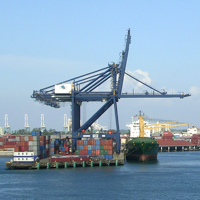As recently as a decade ago, Latin America's economic future looked dim, as highlighted by a number of events in December 2001. That month, Argentina's economy crashed; amid massive street protests, four Argentine presidents resigned in less than two weeks, with one presiding just long enough to officially declare the largest sovereign debt default in history. Brazil and Uruguay reeled from their neighbor's meltdown, while other countries in the region braced for capital flight by panicky investors.
In addition to Argentina's collapse, a looming threat from the East was the cause of further foreboding: On Dec. 10, 2001, the People's Republic of China had become a full member of the World Trade Organization. In the globalization-phobic parlance of the day, emerging-market economies feared "a race to the bottom" as businesses hurried their factory operations to Asia. Eyeing the terrain, the Economic Commission on Latin America, a U.N. outfit, forecast "low growth, worsening economic conditions and bleak prospects for the future."
Instead, Latin America experienced its strongest era of growth since the 1960s. Conditions stabilized from 2002-2003, just as new international trade channels were opening up. The global economic geography spread out significantly, incorporating a second center of activity in Asia. Led by China, Asia's rise created a fresh source of demand for Latin American commodities: Gold, copper, silver, iron ore, timber, rubber, soybeans, fish, beef, rice, cotton, coffee and chocolate all soared on global markets, to say nothing of oil and natural gas prices. Even when its exports were not sent to Asia, Latin America still benefited from rising global consumption. More than any other single factor, Latin America owes its growth in the new millennium to Asian demand.

